Mercury is a toxic heavy metal that can cause serious health problems. Fish are a significant source of mercury exposure for humans. But where does the mercury in fish come from?
Natural Sources

Mercury is a naturally occurring element that is found in the earth's crust. It is released into the environment through volcanic activity, forest fires, and erosion. This mercury can end up in bodies of water, where it can be absorbed by aquatic plants and animals.
Human Activities
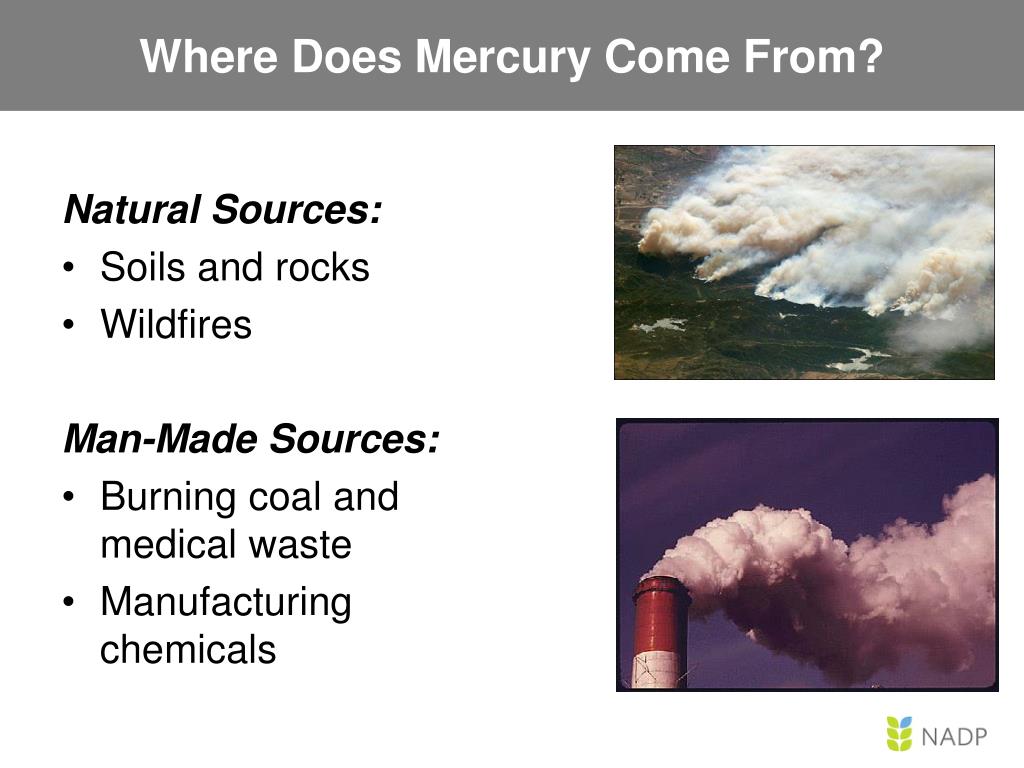
Human activities are the primary source of mercury pollution. Industrial processes, such as coal-fired power plants and gold mining, release large amounts of mercury into the air and water. Once in the environment, this mercury can be transformed into methylmercury, a highly toxic form of mercury that accumulates in the food chain.
Fish and Mercury

Fish are a major source of methylmercury exposure for humans. Mercury in the water is absorbed by algae, which is then eaten by small fish. Larger fish eat the smaller fish, and the mercury accumulates in their tissue. This is why larger, predatory fish such as shark, swordfish, and king mackerel tend to have the highest levels of mercury.
Mercury in Seafood
/2223830-article-img-Mercury-in-Fish-7b65f565a4764d3cbb00b01baeae2ee8.png)
The amount of mercury in seafood can vary depending on the species of fish, where it was caught, and its size. The US FDA recommends that pregnant women, nursing mothers, and young children avoid eating certain types of fish that are high in mercury. These include shark, swordfish, king mackerel, and tilefish.
Reducing Mercury Exposure
There are several ways to reduce your exposure to mercury from fish:
- Avoid eating high-mercury fish
- Eat a variety of fish from different sources
- Cook fish thoroughly to reduce the amount of mercury
- Consider taking a fish oil supplement instead of eating fish
Conclusion
Mercury in fish is a serious health concern, but it is possible to reduce your exposure by being aware of which types of fish are high in mercury and taking steps to limit your consumption. By following these guidelines, you can enjoy the health benefits of seafood without putting yourself at risk of mercury toxicity.
Related video of Where Does Mercury In Fish Come From

Have you ever heard the phrase "knock on wood" and wondered where it came from? This popular expression has been around for centuries and is still widely used today. In this article, we will explore the origins of this phrase and how it has evolved over time.
Origins of Knock On Wood
The exact origin of "knock on wood" is uncertain, but there are several theories. One theory dates back to ancient pagan cultures, where it was believed that spirits resided in trees. Knocking on wood was thought to awaken these spirits and provide protection from evil.

Another theory stems from Christianity. It is believed that knocking on wood originated from the idea of touching or kissing the wood of the cross for good luck or protection.

Evolution of Knock On Wood
Over time, the meaning of "knock on wood" has evolved to include a variety of superstitious beliefs. Today, many people use the phrase to avoid jinxing themselves after a positive statement or to wish for good luck in the future.
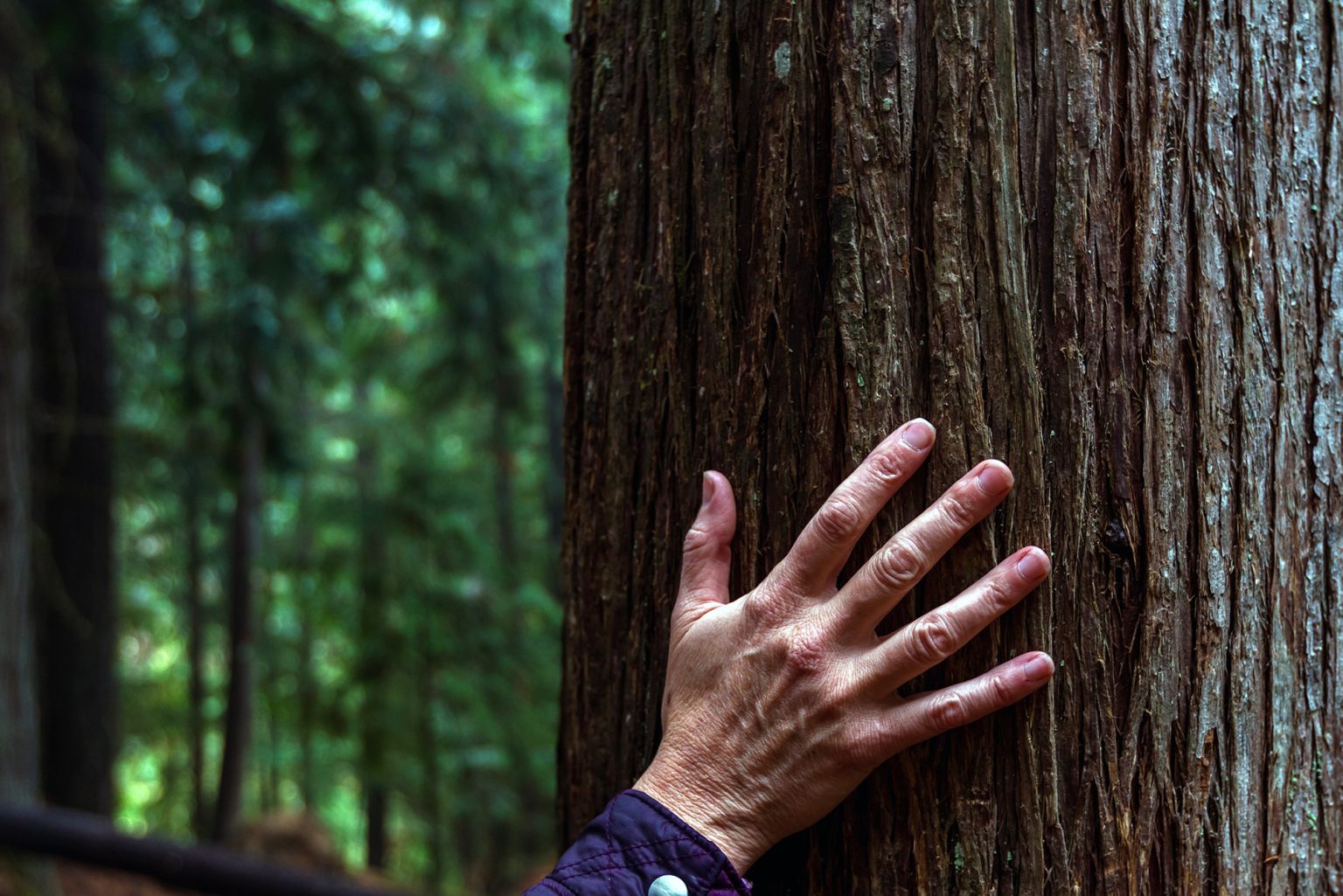
In some cultures, such as Russia, people knock on wood three times after making a statement to ensure that it comes true. Others believe that knocking on wood will ward off bad luck or evil spirits.
Other Languages and Variations
Interestingly, "knock on wood" is not exclusive to English-speaking cultures. In German, the phrase is "auf Holz klopfen," and in French, it is "toucher du bois."
There are also variations of the phrase, such as "touch wood" in the UK, "knock on timber" in Australia, and "knock on formica" in the United States.

Conclusion
While the exact origins of "knock on wood" may be unknown, its enduring popularity is a testament to the power of superstition and the human desire for good luck and protection. Whether you're a believer or not, it never hurts to knock on wood, just in case.
Related video of Where Does Knock On Wood Come From?
Graphite is a naturally occurring mineral that is widely used in various industries. It is a form of carbon that is prized for its unique properties, such as its lubricating and thermal conductivity capabilities. But where does graphite come from, and how is it extracted from the earth?
What is Graphite?

Before we dive into where graphite comes from, let's first define what it is. Graphite is a crystalline form of carbon that is formed under high pressure and temperature conditions. It is composed of carbon atoms arranged in a hexagonal lattice structure, which gives it its unique properties.
How is Graphite Formed?
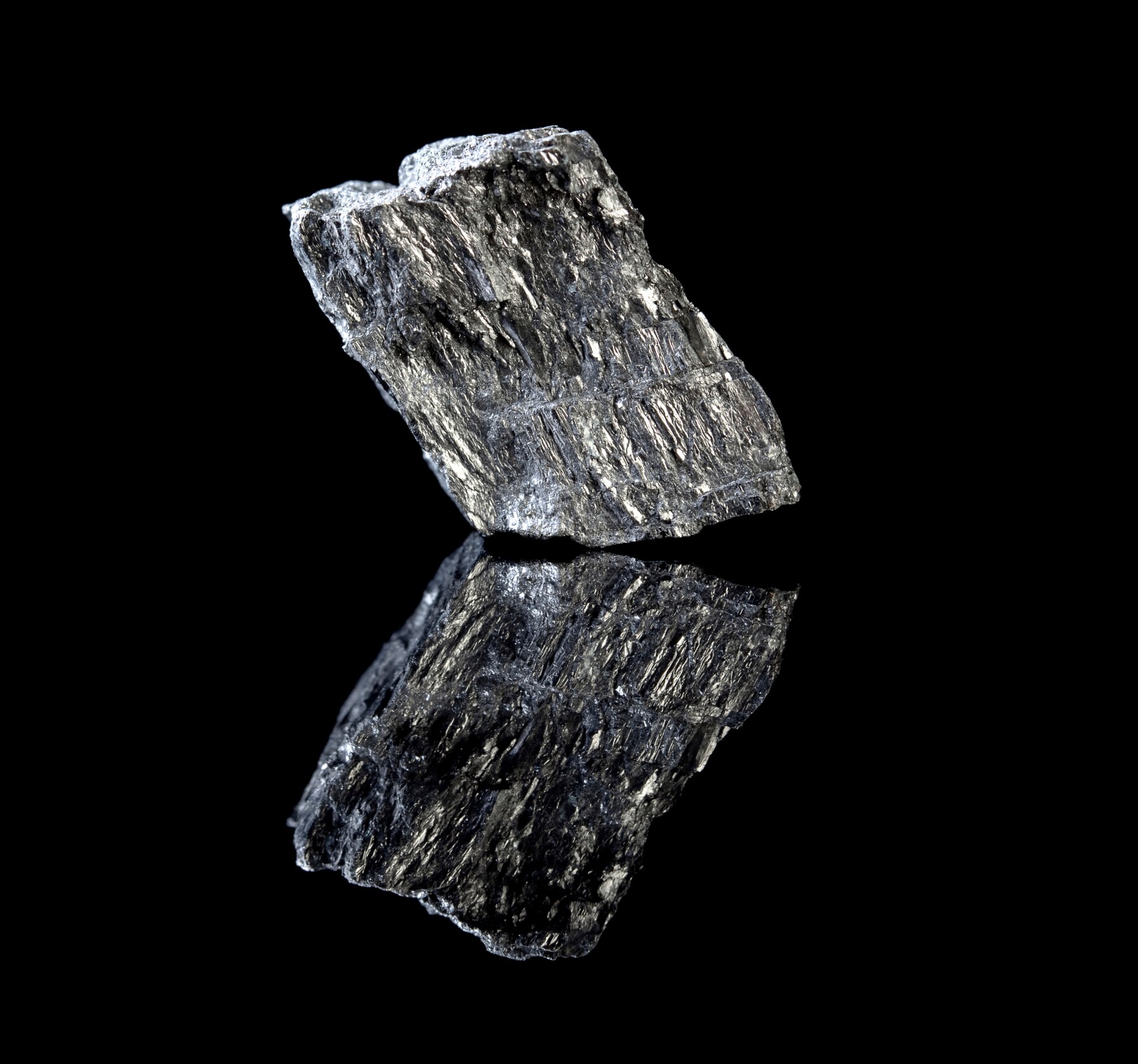
Graphite is formed through a process called metamorphism, which involves the transformation of pre-existing rocks under high temperature and pressure conditions. The carbon in these rocks undergoes chemical changes and is transformed into graphite over millions of years.
Where is Graphite Found?

Graphite is found all over the world, but the largest deposits are located in China, India, Brazil, and Canada. Graphite is typically found in metamorphic rocks such as schist and gneiss, as well as in igneous rocks such as granite and pegmatite.
How is Graphite Extracted?
Graphite is extracted using a variety of mining methods, depending on the location and type of deposit. Open-pit mining and underground mining are the most common methods used to extract graphite. In some cases, graphite can also be extracted through a process called froth flotation, which involves separating the graphite from other minerals using chemicals and water.
What are the Uses of Graphite?

Graphite has a wide range of uses in various industries, including the automotive, aerospace, and electronics industries. It is used as a lubricant in machinery, as a thermal conductor in electronic devices, and as a component in batteries and fuel cells. Graphite is also used in the production of steel and other metals, as well as in the manufacturing of pencils and other writing tools.
Conclusion
Graphite is a unique and valuable mineral that is used in a variety of industries around the world. It is formed through a process of metamorphism, and can be found in rocks all over the world. Graphite is extracted using a variety of mining methods, and is used for its unique properties in a wide range of applications.
Related video of Where Does Graphite Come From
Introduction
Bacon is a popular food item enjoyed by many people around the world. It is commonly used in breakfast dishes, sandwiches, and even in salads. However, do you ever wonder where bacon comes from? In this article, we will explore the origins of bacon and how it is made.
What is Bacon?
Bacon is a type of salt-cured pork that comes from the belly or back of a pig. It is typically sliced into thin strips and is known for its smoky and salty flavor. It is a staple in many households and is used in various cuisines around the world.

History of Bacon
Bacon has been around for centuries and has a rich history. The process of curing meat dates back to ancient times when people discovered that salt could preserve meat. In the Middle Ages, bacon was a staple food for peasants because it was cheap and easy to make. It was also used as a form of currency and was even given as gifts.
During the 16th century, bacon became popular in England and was used in many traditional English dishes. When European settlers came to America, they brought their love of bacon with them, and it soon became a popular food item in the United States.
How is Bacon Made?
The process of making bacon starts with the pork belly. The pork belly is first cured with a mixture of salt, sugar, and other spices. It is then left to dry for a period of time, which can range from a few days to a few weeks. Once the curing process is complete, the bacon is smoked over wood chips or sawdust to give it that smoky flavor.
/bacon-landscape_annotated-b752b0cf9fd74df0b676215f8525b442.jpg)
After the smoking process, the bacon is sliced into thin strips and packaged for sale. Some bacon is sold raw, while others are precooked and sold in packages. Precooked bacon is convenient because it can be heated quickly in the microwave or on the stove.
Types of Bacon
There are many different types of bacon, each with its own unique flavor and texture. Some of the most popular types of bacon include:
- Canadian Bacon
- Back Bacon
- Pancetta
- Pepper Bacon
- Turkey Bacon
Health Benefits of Bacon
While bacon is delicious, it is also high in fat and sodium. It is not the healthiest food item, but it can be enjoyed in moderation. Bacon does have some health benefits, including:
- Protein
- Vitamin B12
- Zinc
- Iron
However, it is important to be mindful of how much bacon you consume and to choose leaner cuts of bacon when possible.
Conclusion
Bacon is a beloved food item that has been around for centuries. It is made from the belly or back of a pig and is cured with a mixture of salt, sugar, and spices. It is then smoked over wood chips or sawdust to give it that smoky flavor. Bacon is sold in many different forms and is used in various cuisines around the world. While it is not the healthiest food item, it can be enjoyed in moderation.
Related video of Where Does Bacon Come From?

Introduction
Warts are small, rough growths on the skin that are caused by a viral infection. They are common and can appear on any part of the body, but are most often found on the hands and feet. Warts are generally harmless, but they can be unsightly and uncomfortable. In this article, we will explore where warts come from and what you can do to prevent and treat them.
What Causes Warts?
Warts are caused by the human papillomavirus (HPV). There are more than 100 different types of HPV, and each type causes a different type of wart. HPV can be spread from person to person through direct contact, such as shaking hands or touching a surface that has been touched by someone with a wart. Warts can also be spread through contact with objects that have been contaminated with the virus, such as towels or shoes.

Who is Most at Risk for Getting Warts?
Anyone can get warts, but some people are more at risk than others. Children and teenagers are more likely to get warts than adults, and people with weakened immune systems are also more at risk. People who frequently use public showers or locker rooms, such as athletes or swimmers, are also more at risk because the virus can live on surfaces for a long time.
Types of Warts
There are several different types of warts, each with its own unique appearance:
- Common warts – these are the most common type of wart and usually appear on the hands and fingers.
- Plantar warts – these appear on the soles of the feet and can be painful to walk on.
- Flat warts – these are small, smooth warts that usually appear on the face, neck, and hands.
- Genital warts – these are warts that appear in the genital area and are spread through sexual contact.
/plantar-warts-resized-56a315a85f9b58b7d0d04d6f.jpg)
Preventing Warts
The best way to prevent warts is to avoid contact with the virus that causes them. This means avoiding touching warts on other people or on yourself, as well as avoiding contact with surfaces that may be contaminated with the virus. You should also avoid sharing towels, shoes, or other personal items that may have come into contact with the virus. Keeping your skin clean and dry can also help prevent warts.
Treating Warts
Most warts will eventually go away on their own, but it can take months or even years for them to disappear. If you want to get rid of a wart more quickly, there are several treatment options available, including:
- Over-the-counter wart removers – these contain salicylic acid and work by dissolving the wart.
- Cryotherapy – this involves freezing the wart with liquid nitrogen.
- Electrosurgery – this involves burning the wart off with an electrical current.
- Laser surgery – this involves using a laser to destroy the wart.

Conclusion
Warts are a common skin condition that can be caused by a viral infection. They are generally harmless, but can be unsightly and uncomfortable. Warts can be prevented by avoiding contact with the virus that causes them, and can be treated with over-the-counter wart removers or more invasive procedures such as cryotherapy or electrosurgery. If you are concerned about a wart or have questions about treatment options, you should talk to your doctor or dermatologist.
Related video of Where Do Warts Come From?

Scorpions are fascinating creatures that have been around for centuries. They are known for their distinctive appearance, with their eight legs and a long tail that ends in a venomous stinger. But where do scorpions live? This article will explore the habitat of scorpions, their preferred environments, and how to avoid them.
Deserts and Arid Environments

Scorpions are often associated with deserts and arid environments. They are well adapted to these harsh conditions and can be found in regions such as the Mojave Desert in the United States, the Sahara Desert in Africa, and the Arabian Desert in the Middle East. These environments provide scorpions with the warm temperatures and dry conditions they need to thrive.
Forests and Jungles
Contrary to popular belief, scorpions can also be found in forests and jungles. While they may not be as common in these areas as they are in deserts, some species of scorpions have adapted to live in these environments. They can be found in regions such as the Amazon Rainforest in South America and the forests of Southeast Asia.
Mountains and Caves
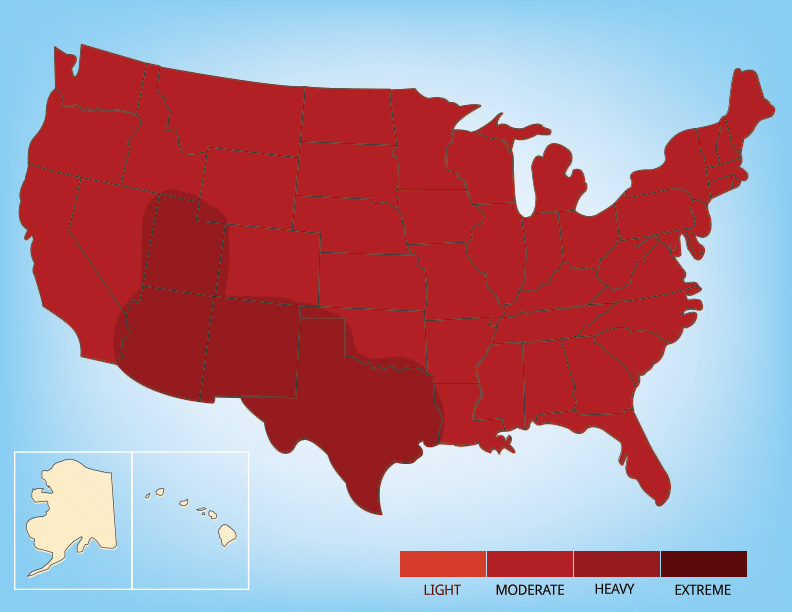
Scorpions are also found in mountainous regions and caves. These environments provide scorpions with the cool, damp conditions they need to survive. They can be found in the Rocky Mountains in the United States, the mountains of Europe, and the caves of Australia.
Urban Areas

Scorpions are not limited to natural habitats and can also be found in urban areas. They are often attracted to cities and towns because of the abundance of food and shelter. They can be found in areas such as homes, gardens, and parks.
How to Avoid Scorpions

While scorpions are fascinating creatures, they can also be dangerous. Their venomous stings can cause pain, swelling, and even death in some cases. To avoid scorpions, it is important to be aware of your surroundings and take precautions. Here are some tips:
- Wear protective clothing when in areas known for scorpions.
- Keep your home and yard clean and free of clutter.
- Seal any cracks or crevices in your home to prevent scorpions from entering.
- Use insecticides and repellents to keep scorpions away.
- If you encounter a scorpion, leave it alone and do not try to handle it.
In Conclusion
Scorpions are fascinating creatures that can be found in a variety of habitats. From deserts and jungles to mountains and caves, these creatures have adapted to survive in some of the harshest conditions on earth. While scorpions can be dangerous, they can be avoided with proper precautions and awareness of your surroundings.
Related video of Where Do Scorpions Live?

Rabbits are adorable small mammals that are found in different parts of the world. They are known for their fluffy tails, long ears, and soft fur. There are different types of rabbits, and each has its unique characteristics. In this article, we will be discussing where rabbits live in and their habitats.
Wild Rabbits Habitat

Wild rabbits can be found in different habitats, including forests, meadows, deserts, and grasslands. They prefer to live in areas that provide them with enough food, shelter, and protection from predators. Their habitats are often characterized by vegetation, such as tall grasses and shrubs, which provide them with cover.
Wild rabbits are also known to dig burrows in the ground, where they live and breed. These burrows provide them with shelter and protection from extreme weather conditions and predators. They are often found in groups, and each group has a leader who is in charge of protecting the group.
Domestic Rabbits Habitat

Domestic rabbits are often kept as pets and are different from wild rabbits. They are usually kept indoors, and their habitats are characterized by cages or hutches. These cages or hutches provide them with shelter, food, and water. Domestic rabbits are often fed with pellets, hay, and vegetables.
Domestic rabbits can also be kept outdoors, but they need to be protected from extreme weather conditions and predators. Their outdoor habitats are characterized by cages or hutches, which are placed in a shaded area. They are also often provided with toys and other forms of entertainment to keep them active and healthy.
Rabbits in the Arctic Habitat

Rabbits in the Arctic are adapted to living in extreme weather conditions. They are often found in areas where the ground is covered with snow and ice. These areas are characterized by low vegetation, such as willows and grasses. The rabbits have thick fur, which helps to keep them warm during the cold winter months.
They also have large hind feet, which help them to move around in the snow. Rabbits in the Arctic are known to dig burrows in the snow, which provide them with shelter and protection from predators.
Rabbits in the Desert Habitat
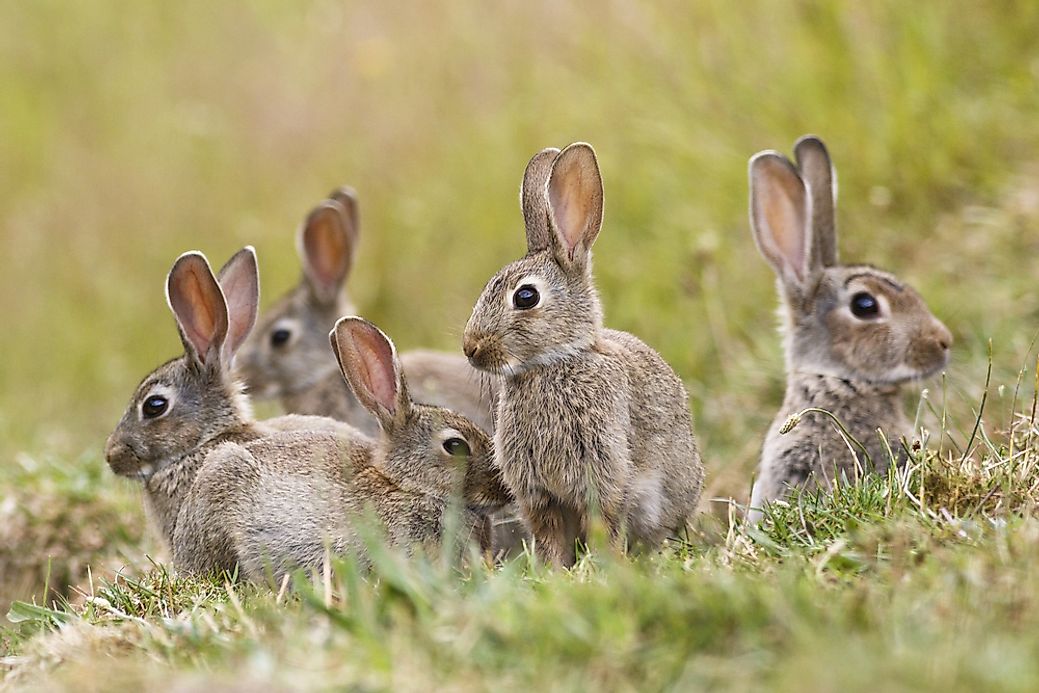
Rabbits in the desert are adapted to living in harsh and dry environments. They are often found in areas where the ground is covered with sand and rocks. Their habitats are characterized by low vegetation, such as cacti and shrubs, which provide them with cover.
They are also known to dig burrows in the ground, which provide them with shelter and protection from extreme temperatures and predators. Their burrows are often deep and can extend up to 10 feet below the ground. Rabbits in the desert are also known to come out at night to feed when the temperature is cooler.
Rabbits in the Forest Habitat

Rabbits in the forest are often found in areas where there is dense vegetation, such as shrubs and trees. Their habitats are characterized by fallen leaves, which provide them with cover. They are also known to dig burrows in the ground, which provide them with shelter and protection from predators.
Rabbits in the forest are often found in groups, and each group has a leader who is in charge of protecting the group. They are also known to come out at night to feed on different types of vegetation.
Rabbits in the Grassland Habitat
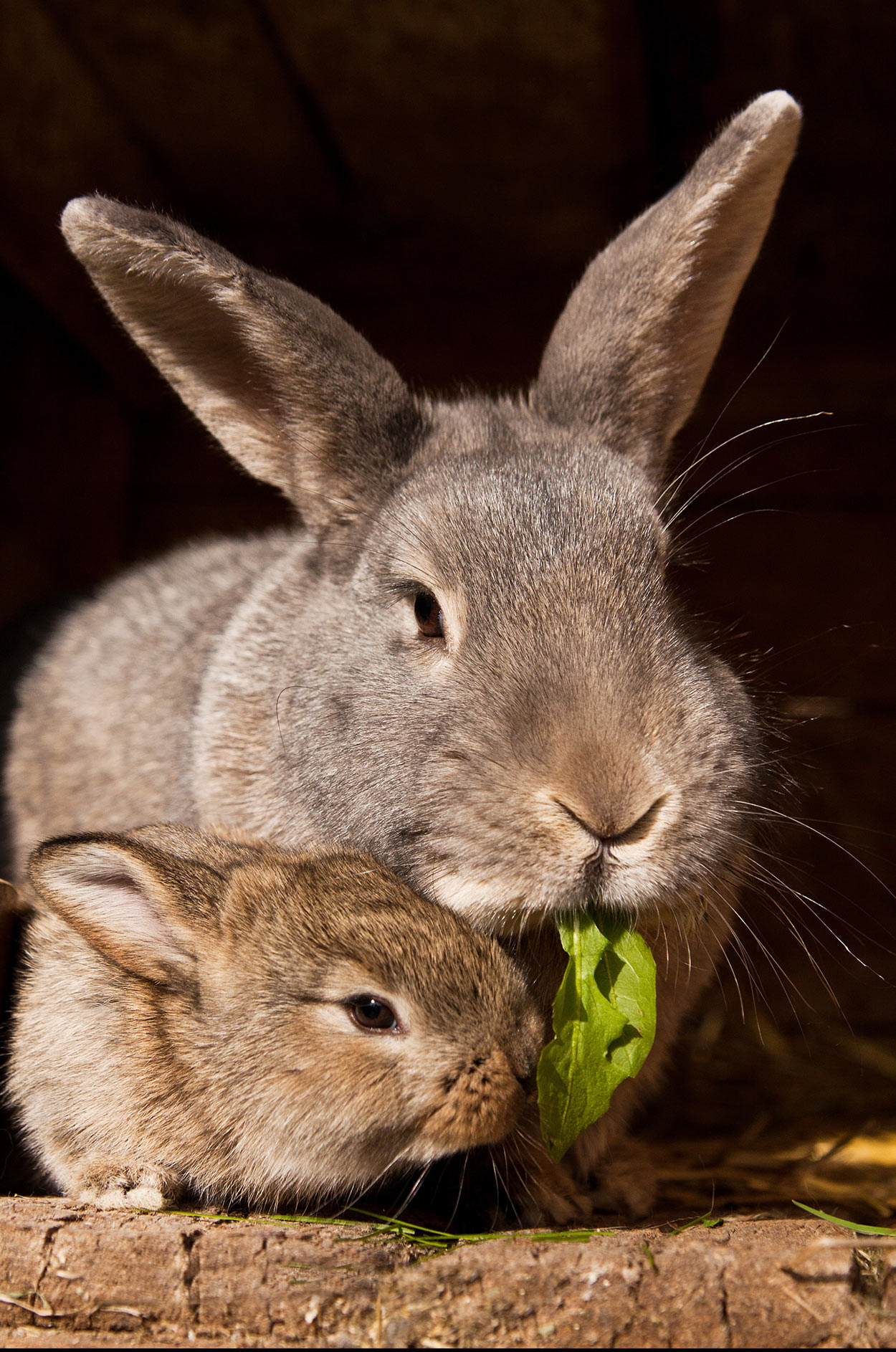
Rabbits in the grassland are often found in areas where there is tall grass and shrubs. Their habitats are characterized by open spaces, which provide them with enough food and cover. They are also known to dig burrows in the ground, which provide them with shelter and protection from predators.
Rabbits in the grassland are often found in groups, and each group has a leader who is in charge of protecting the group. They are also known to come out at night to feed on different types of vegetation.
Conclusion
Rabbits are adaptable creatures that can survive in different types of habitats. They are found in different parts of the world, and each type of rabbit has its unique characteristics. Whether living in the wild or as pets, rabbits require adequate food, water, and shelter to survive.
Whether you are interested in learning more about wild rabbits or considering keeping a pet rabbit, understanding their habitats is crucial to their well-being. By providing them with the right environment, you can ensure that they live a happy and healthy life.
Related video of Where Do Rabbits Live In
It's not difficult to imagine a peanut butter and jelly sandwich, peanut brittle, or roasted peanuts as a snack. Peanuts are an essential ingredient in many delicious foods. But, have you ever wondered where peanuts come from and where they grow? In this article, we will explore the origins and growing locations of peanuts.
The Origins of Peanuts
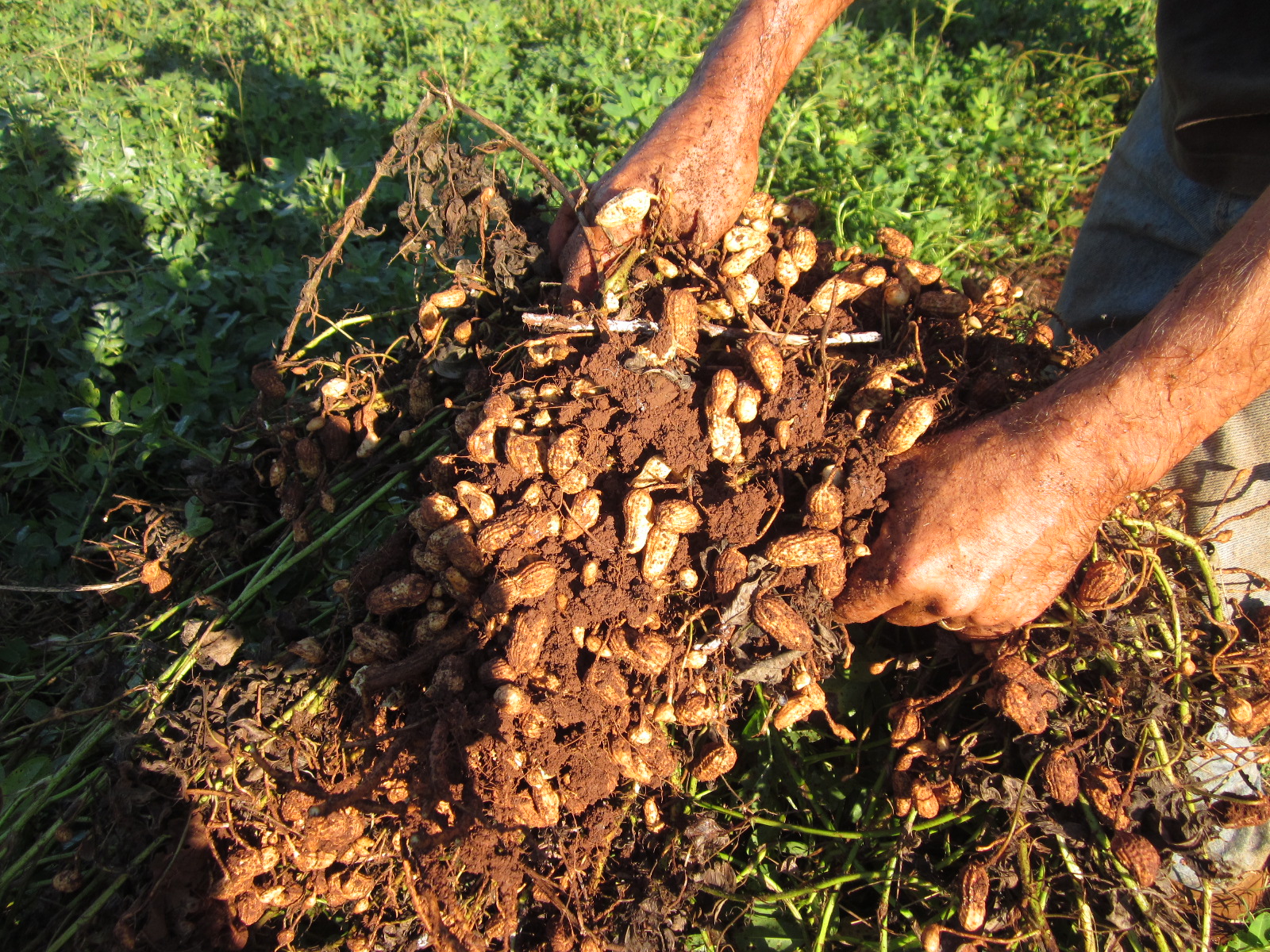
Peanuts are not really nuts, but legumes that are part of the Fabaceae family. They are indigenous to South America, and their cultivation dates back to the pre-Columbian era. Peanuts were a crucial food source for the ancient Incas in Peru, who also used them for medicinal purposes.
The Spanish explorers brought peanuts to Europe, and from there, their cultivation spread to Africa and Asia. Peanuts became a popular crop in the southern US in the 1800s, and the rest is history.
Where Do Peanuts Grow?

Peanuts grow best in warm, sandy soils with good drainage. They are a popular crop in warm climates, such as the southern US, Africa, Asia, and South America.
In the US, Georgia and Alabama are the largest peanut-producing states, followed by Florida, Texas, and North Carolina. The majority of the peanuts grown in the US are used for peanut butter, but they are also used for candy, snacks, and oil.
Peanuts are also grown in South America, primarily in Argentina, Brazil, and Paraguay. In Asia, China, India, and Indonesia are the largest peanut-producing countries.
Peanut Cultivation

Peanuts are planted in the spring, and the seeds germinate in about ten days. They require about 120 to 130 days to mature, and their growth is influenced by temperature and rainfall.
After the peanuts are harvested, they are dried, cleaned, and inspected for quality. Some peanuts are sold raw, while others are roasted or blanched before being sold. The shells of the peanuts can be used for animal feed or fuel.
The Health Benefits of Peanuts
Peanuts are a great source of protein and are rich in nutrients, such as vitamin E, magnesium, and fiber. They also contain antioxidants that can help reduce the risk of heart disease and cancer.
However, it is important to note that peanuts are also high in calories and fat, so it's essential to consume them in moderation and as part of a balanced diet.
In Conclusion
So, where do peanuts grow? Peanuts are native to South America, but they are now grown in warm climates throughout the world. The largest peanut-producing countries are the US, Argentina, Brazil, Paraguay, China, India, and Indonesia.
Peanuts are not only delicious but also nutritious. They are an excellent source of protein and contain many essential vitamins and minerals. So, whether you eat them as a snack or in your favorite dish, you can enjoy the health benefits of this versatile legume.
Related video of Where Do Peanuts Grow?

Gypsies, also known as Romani people, are a widely dispersed ethnic group with origins in India. They are a unique group of people who have developed their own language, customs, and traditions over the centuries. They are known for their nomadic way of life, traveling from place to place in caravans.
Origins of the Gypsies

Their origins can be traced back to India, where they were originally known as the Dom people. It is believed that they migrated from India to the Middle East and Europe in the 11th century. The exact reasons for their migration are unclear, but it is thought that they were forced to leave due to political instability and persecution.
Gypsies in Europe

The Romani people arrived in Europe in the 14th century and have been living there ever since. They faced widespread discrimination and persecution in Europe, with many countries enacting laws to restrict their movements and way of life. They were often accused of being thieves and beggars, and were forced to live on the fringes of society.
Gypsies in America
The Romani people arrived in America in the late 19th century, mainly from Eastern Europe. They faced similar discrimination and persecution in America, with many states enacting laws to restrict their movements and way of life. Despite this, they managed to maintain their cultural identity and traditions.
Gypsies Today

Today, there are an estimated 10-12 million Romani people living around the world. They are still widely discriminated against and face many challenges, including poverty, unemployment, and lack of access to education and healthcare. However, many Romani people are working to improve their lives and break down the barriers that have kept them marginalized for centuries.
Gypsy Culture and Traditions

Gypsy culture and traditions are rich and varied, with a strong emphasis on family and community. They have their own language, called Romani, which is spoken by millions of people around the world. They are known for their music, dance, and storytelling, which have been passed down from generation to generation.
Gypsy Stereotypes

Unfortunately, the Romani people have long been the target of negative stereotypes and discrimination. They are often portrayed as thieves, beggars, and con artists in popular culture, which has only served to reinforce these negative stereotypes. However, it is important to remember that these stereotypes are not accurate representations of the Romani people as a whole.
The Future of the Gypsies

The future of the Romani people is uncertain, but there is hope that they will be able to overcome the barriers that have kept them marginalized for centuries. Many Romani people are working to improve their lives and break down the stereotypes that have held them back. With continued support and advocacy, the Romani people can build a brighter future for themselves and their communities.
Conclusion
The Romani people, also known as Gypsies, have a rich and varied history that spans centuries and continents. They have faced widespread discrimination and persecution throughout their history, but have managed to maintain their cultural identity and traditions. Today, they continue to face many challenges, but there is hope that they will be able to overcome these obstacles and build a brighter future for themselves and their communities.
Related video of Where Do Gypsies Come From?
/fahrenheit-celsius-equivalents-609236-sketch4-aa1f33a4c9bf49a5ba4baac98dbe98a2.png)
Introduction
Have you ever wondered where Celsius and Fahrenheit meet? These two temperature scales are used all over the world, but they have different starting points and degrees of measurement. In this article, we will explore where Celsius and Fahrenheit meet and how they differ.Celsius and Fahrenheit – What are they?
Celsius and Fahrenheit are two temperature scales used to measure temperature. Celsius is the most commonly used temperature scale, and it is used in most countries around the world. Fahrenheit is mainly used in the United States, and a few other countries that still use the imperial system of measurements.Celsius is based on the freezing and boiling points of water. The freezing point of water is 0 degrees Celsius, and the boiling point of water is 100 degrees Celsius. Fahrenheit, on the other hand, is based on the freezing point of a mixture of ice, water, and salt. The freezing point of this mixture is 32 degrees Fahrenheit, and the boiling point of water is 212 degrees Fahrenheit.Conversion between Celsius and Fahrenheit
To convert Celsius to Fahrenheit, you can use the following formula: F = (C x 1.8) + 32To convert Fahrenheit to Celsius, you can use the following formula:C = (F - 32) / 1.8Where do Celsius and Fahrenheit meet?
Celsius and Fahrenheit meet at -40 degrees. This is the only temperature at which both scales have the same numerical value. At -40 degrees, -40 degrees Celsius is equal to -40 degrees Fahrenheit.